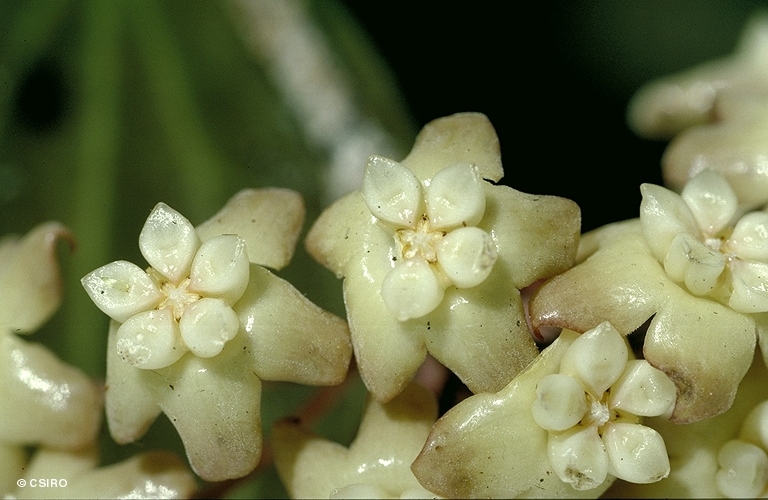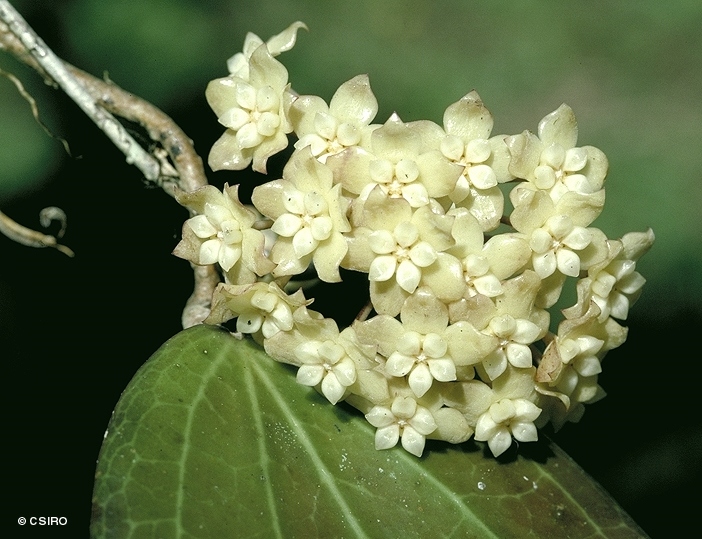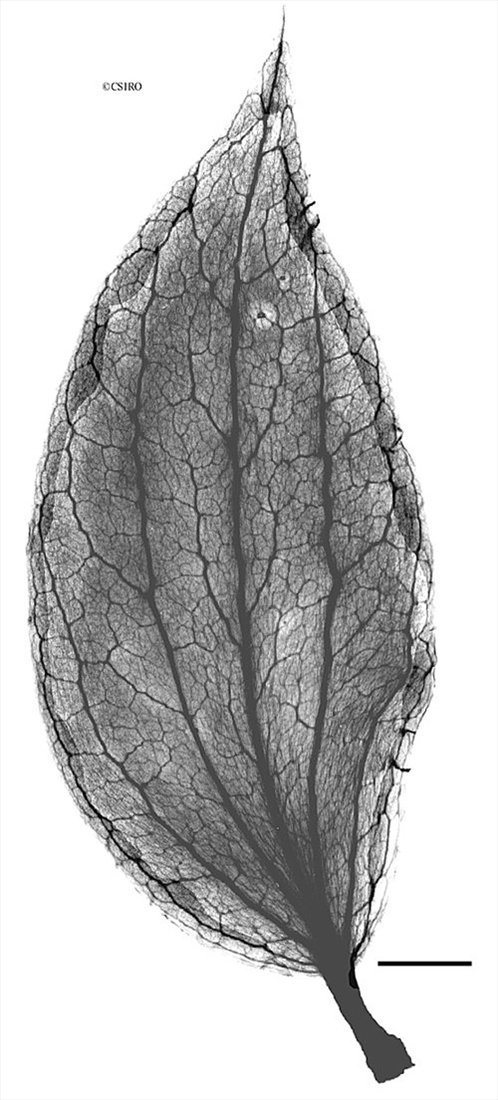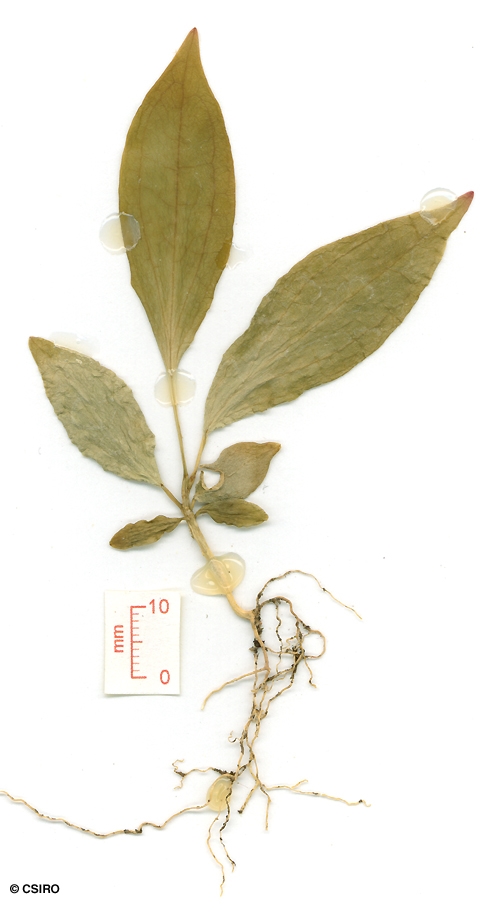Australian Tropical Rainforest Plants - Online edition
Hoya pottsii J.Traill






Traill, G.W. (1827) Trans Hort. Soc. London 7: 25. Type: Cultivated plant; Trans. Hort. Soc. London 7: 25, fig. 1 (1827); lecto, fide Forster & Liddle (1992).
Hoya, Claret; Claret Hoya
Usually a root climber but growing stems will twine. A slender vine not exceeding a stem diameter of 2 cm.
Twigs, petioles and leaf blades produce a milky exudate when cut or broken. Leaf blades thick and fleshy or leathery, about 8.5-14 x 4.5-8 cm, petioles about 1-2.5 cm long, thick and curved and +/- attached to the lower surface of the leaf blade. Venation difficult to discern but usually visible on the upper surface with 3-5 veins, including the midrib, radiating from the base. Sometimes 3 or 4 leaves may appear to originate at a node. Colleters 5-6, visible on the upper surface near the base of the leaf blade.
Flowers pleasantly perfumed. Flowers borne in compressed racemes resembling umbels. Successive flowers produced from the same peduncle which continues to expand while flowering continues. Pedicels about 20-30 mm long. Flowers about 12-18 mm diam, corolla lobes recurved. Calyx lobes about 1-2 mm long, corolla lobes about 4-7 mm long with a waxy appearance. Stamens fused to form a lobed column, the lobes about 3-4 x 3 mm.
Cotyledons elliptic, about 11-15 x 5-6 mm, petioles short, about 1 mm long. First leaf slightly larger than the cotyledons. At the tenth leaf stage: leaf blade ovate to lanceolate, thick and fleshy. Colleters present on the midrib on the upper surface of the leaf blade near its junction with the petiole. Seed germination time 10 days.
Occurs in CYP, NEQ and CEQ. Altitudinal range from near sea level to 1100 m. Grows in eucalypt forest, monsoon forest and rain forest, often on rocks or boulders in these forest formations. Also occurs in New Guinea.





